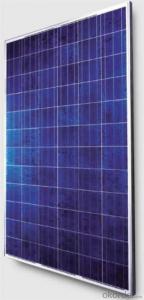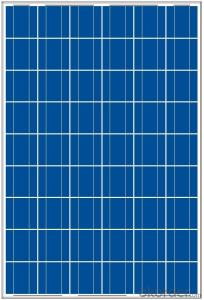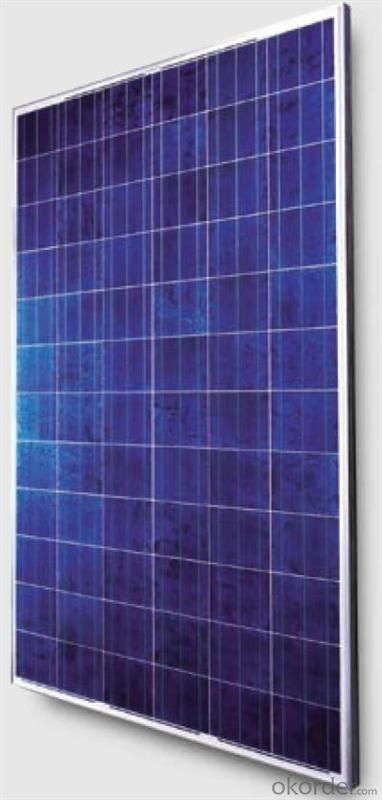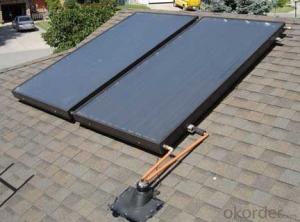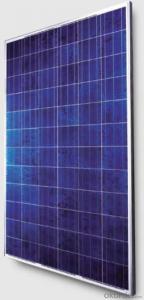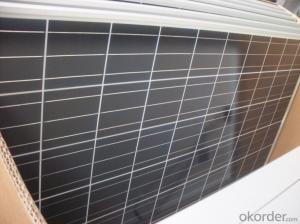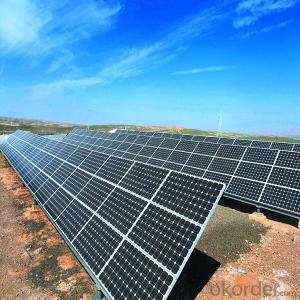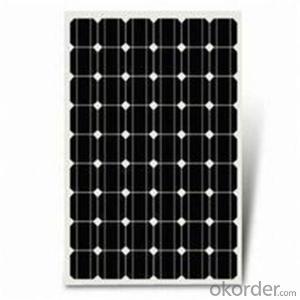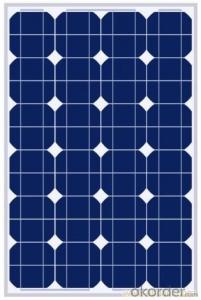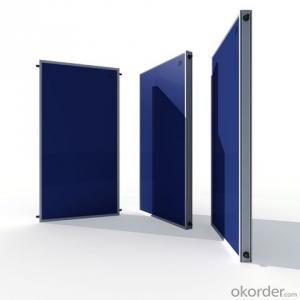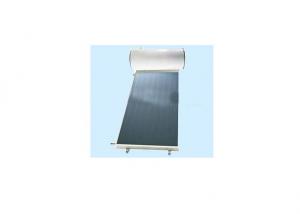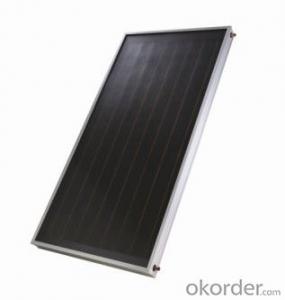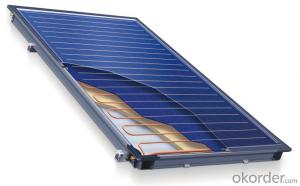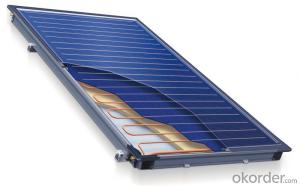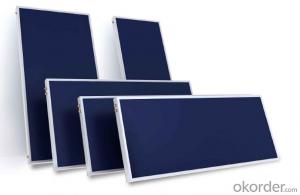Radco Solar Collectors - Polycrystalline Solar Modules Made in China for Exporting
- Loading Port:
- Tianjin
- Payment Terms:
- TT OR LC
- Min Order Qty:
- 1 pallet
- Supply Capability:
- 100000000 pallet/month
OKorder Service Pledge
OKorder Financial Service
You Might Also Like
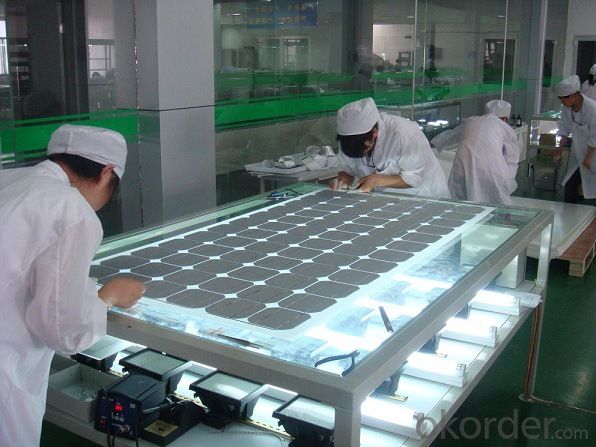
Specifications:
solar panels from 5W--300W, made of TAIWAN MOTECH brand cells,with CO in TAIWAN,Mono and Poly with VDE,IEC,CSA,UL,CE,ISO.
We import solar cells from Taiwan Motech brand, with this CO in taiwan and our CSA certification,we can still sell goods to Anti-dumping areas like USA. Our main products are solar panels, off grid and on grid solar home systems , solar street lighting systems, solar water heating system,solar pump,solar attic fan, solar DC LED lights and solar DC refrigerators.
Certificates : ISO, CE, VDE IEC, MCS, CSA-UL, CEC.
Delivery time: sample 10days, order 25-30days.
Sample: charged.
Payment term: T/T 30% as deposit, 70% before shipment. Or irrevocable L/C at sight.
Trade term: FOB Shenzhen or CIF destination seaport or Airport.
Characteristics:
I.Solar Cell : High efficiency crystalline solar cell. Even if under the weak light, the solar module can produce maximum power output.
II.Tempered glass (toughened glass): Anti-reflecting coating and high transmission rate glass increase the power output and mechanical strength of solar module.
III.EVA and TPT: Using high quality EVA and TPT to prevent destroying and water.
IV.AI frame: Without screw, corner connection. 6 holes on the frame can be installed easily.
V.Junction box: Multi function junction box with water proof.
VI.Long lifetime: ≥25 years; Less power decrease.
VII.Good performance of preventing from atrocious weather such as wind and hails.
VIII.Resisting moisture and etching effectively, not effected by geology.
IX.The certificate issued by international authority: UL, TUV, IEC, VDE, CE.
Quality and Safety
1. Rigorous quality control meets the highest international standards.
2. High-transmissivity low-iron tempered glass, strong aluminium frame.
3. Using UV-resistant silicon.
4. IS09001/14001/CE/TUV/UL
Warranties
1. 10 years limited product warranty
2. 15 years at 90% of the minimal rated power output
3. 25 years at 80% of the minimal rated power output
Technical date :
ITEM NO.: | Poly 156*156 cell ,60pcs . Power range from 230Wp-260Wp | ||||||
Maximum Power(W) | 230 | 235 | 240 | 245 | 250 | 255 | 260 |
Optimum Power Voltage(Vmp) | 29.4 | 29.5 | 29.7 | 30.1 | 30.3 | 30.5 | 30.7 |
Optimum Operatige Current(Imp) | 7.83 | 7.97 | 8.08 | 8.14 | 8.25 | 8.37 | 8.48 |
Open Circuit Voltage(Voc) | 36.7 | 36.8 | 36.9 | 37.1 | 37.3 | 37.5 | 37.7 |
Short Circuit Current(Isc) | 8.52 | 8.59 | 8.62 | 8.65 | 8.69 | 8.73 | 8.78 |
Solar Cell: | 156*156 Poly | ||||||
Number of Cell(pcs) | 6*10 | ||||||
Name of Solar Cells | Polycrystalline Cell | ||||||
Size of Module(mm) | 1650*992*40/45/50 | ||||||
Cable & Connector Type | Pass the TUV Certificate | ||||||
Frame(Material Corners,etc.) | Aluminium-alloy | ||||||
Back sheet | TPT | ||||||
Weight Per Piece(KG) | 19.5KG | ||||||
FF (%) | 70-76% | ||||||
Junction Box Type | Pass the TUV Certificate | ||||||
Tolerance Wattage(e.g.+/-5%) | ±3%, or 0-3% | ||||||
Front Glass Thickness(mm) | 3.2 | ||||||
Temperature Coefficients of Isc(%) | +0.04 | ||||||
Temperature Coefficients of Voc(%) | -0.38 | ||||||
Temperature Coefficients of Pm(%) | -0.47 | ||||||
Temperature Coefficients of Im(%) | +0.04 | ||||||
Temperature Coefficients of Vm(%) | -0.38 | ||||||
Temperature Range | -40°C to +85°C | ||||||
Surface Maximum Load Capacity | 5400Pa | ||||||
Allowable Hail Load | 23m/s ,7.53g | ||||||
Bypass Diode Rating(A) | 12 | ||||||
Warranty | 90% of 10 years, 80% of 25 years. | ||||||
Standard Test Conditions | AM1.5 1000W/ 25 +/-2°C | ||||||
Packing | carton or pallet | ||||||
1*20' | 14 Pallets / 316pcs | ||||||
1*40'STD | 25 Pallets / 700pcs | ||||||
FAQ:
We have organized several common questions for our clients,may help you sincerely:
1. What’s price per watt?
A: It’s depends on the quantity, delivery date and payment terms of the order. We can talk further about the detail price issue. Our products is high quality with lower price level.
2. Can you tell me the parameter of your solar panels?
We have different series of cells with different power output, both from c-si to a-si. Please take our specification sheet for your reference.
3. How do you pack your products?
We have rich experience on how to pack the panels to make sure the safety on shipment when it arrives at the destination.
4. Can you do OEM for us?
Yes, we can.
5. How long can we receive the product after purchase?
In the purchase of product within three working days, We will arrange the factory delivery as soon as possible. The perfect time of receiving is related to the state and position of customers. Commonly 7 to 10 working days can be served.
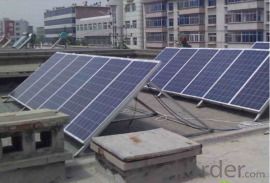
- Q: How do solar collectors perform in hot climates?
- Solar collectors perform well in hot climates as they are designed to absorb and convert sunlight into heat energy. The higher temperatures in hot climates enhance the efficiency of solar collectors, allowing them to generate more heat and provide a greater amount of hot water or space heating.
- Q: What is the maintenance cost for solar collectors?
- The maintenance cost for solar collectors can vary depending on the type and size of the system, as well as the specific components used. Generally, the maintenance cost for solar collectors is relatively low compared to other forms of energy generation. One of the main maintenance tasks for solar collectors is cleaning the panels to ensure optimal efficiency. This can be done using water and a soft cloth or sponge. In some cases, if the panels are installed at an angle, rainwater may be sufficient to keep them clean. Regular inspection of the system is also important to identify any issues or damage that may require repairs. This includes checking for loose connections, damaged wiring, or any signs of wear and tear. It is recommended to have a professional technician perform these inspections to ensure safety and proper functioning of the system. In terms of costs, routine maintenance for solar collectors typically involves minimal expenses. Cleaning supplies, such as water and cleaning agents, may be required, but these are generally low-cost items. If any repairs or replacements are needed, such as fixing a broken panel or replacing a faulty component, the cost will depend on the specific issue and the extent of the repair. Overall, while there are some maintenance tasks and potential costs associated with solar collectors, they are generally minimal compared to the long-term benefits and savings provided by solar energy.
- Q: Can solar collectors be used for heating sewage treatment plants?
- Yes, solar collectors can be used for heating sewage treatment plants. Solar thermal energy can be harnessed through the use of solar collectors to heat water or other fluids, which can then be used to warm sewage in treatment plants. This renewable energy source can help reduce the reliance on fossil fuels and lower the overall energy consumption of sewage treatment plants.
- Q: Can solar collectors be used for heating churches?
- Yes, solar collectors can be used for heating churches. Solar thermal systems can harness the energy from the sun to generate heat, which can then be used to warm up the interior spaces of churches. By installing solar collectors on the roof or nearby areas, churches can significantly reduce their reliance on traditional heating methods and lower their energy costs while promoting sustainable practices.
- Q: Can solar collectors be used for heating car rental facilities?
- Yes, solar collectors can be used for heating car rental facilities. Solar collectors can generate heat by converting sunlight into thermal energy, which can be used to warm the air or water in the facilities. This can help reduce energy costs and carbon emissions associated with traditional heating systems.
- Q: How do solar collectors perform in areas with frequent power outages?
- Solar collectors can be a reliable source of electricity in areas with frequent power outages. Since solar collectors generate electricity from sunlight, they are not dependent on the grid for power supply. This means that even during power outages, solar collectors can continue generating electricity, providing a consistent source of power. However, it is important to note that the effectiveness of solar collectors during power outages may depend on factors such as the capacity of the system, the availability of sunlight, and the presence of backup storage solutions like batteries.
- Q: How do solar collectors perform in polluted areas?
- Solar collectors can still perform well in polluted areas, although their efficiency may be slightly affected. The level of pollution can reduce the amount of sunlight reaching the collectors, leading to a decrease in their overall performance. However, regular cleaning and maintenance can help mitigate the impact of pollution and ensure optimal functioning of solar collectors in these areas.
- Q: Can solar collectors be used for heating universities?
- Yes, solar collectors can be used for heating universities. Solar thermal systems, such as solar water heaters and solar air heating systems, can be installed to provide hot water and space heating for university buildings. These systems use the sun's energy to heat water or air, which can then be used for various heating purposes throughout the university campus. Solar collectors are a sustainable and cost-effective solution for universities to reduce their carbon footprint and dependence on traditional heating methods.
- Q: Can solar collectors be used in street lighting?
- Yes, solar collectors can be used in street lighting. Solar-powered street lights use photovoltaic panels to convert sunlight into electricity, which is stored in batteries and then used to power the street lights during the night. This sustainable and renewable energy solution reduces dependence on the grid and lowers energy costs, making it an environmentally friendly option for street lighting.
- Q: Can solar collectors be used for heating parking structures?
- Yes, solar collectors can be used for heating parking structures. They can be installed on the roof or walls of the structure to capture sunlight and convert it into thermal energy. This energy can then be used to heat the parking structure, providing a sustainable and cost-effective heating solution.
Send your message to us
Radco Solar Collectors - Polycrystalline Solar Modules Made in China for Exporting
- Loading Port:
- Tianjin
- Payment Terms:
- TT OR LC
- Min Order Qty:
- 1 pallet
- Supply Capability:
- 100000000 pallet/month
OKorder Service Pledge
OKorder Financial Service
Similar products
Hot products
Hot Searches
